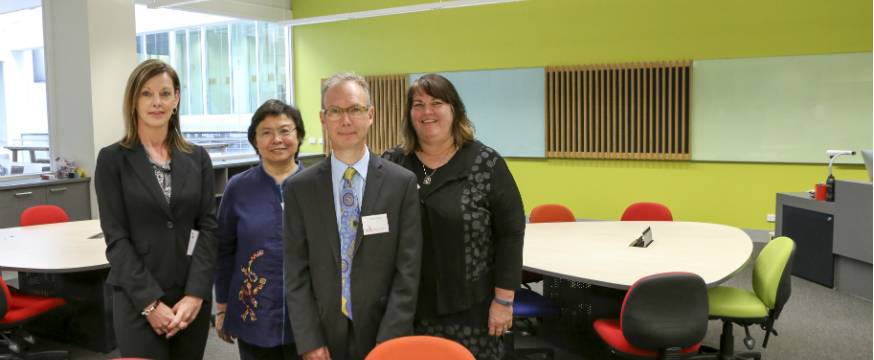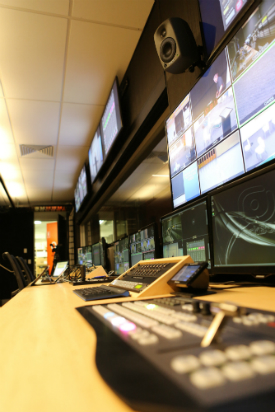
Innovative research classroom to help discover the science of learning
Research 15 Apr 2015 4 minute readA state of the art facility is enabling researchers to better understand the learning process through studying the interactions between students and teachers.
Innovative research classroom to help discover the science of learning
It looks and feels like a normal classroom, similar to what you would find in schools around the world, but this is a classroom with a difference.
While going about their lesson, students and teachers in this classroom have their actions and words recorded for later analysis by researchers keen to better understand the learning process.
Welcome to the Science of Learning Research Classroom.
The classroom is a centrepiece of the Science of Learning Research Centre, a special research initiative of the Australian Research Council, led by the Queensland Brain Institute at the University of Queensland, the University of Melbourne and the Australian Council for Educational Research (ACER).
Located within the Melbourne Graduate School of Education at the University of Melbourne, the Science of Learning Research Classroom is constructed to optimise the study of learning interactions through unobtrusive video and audio capture technology.
The opening of the Science of Learning Research Classroom was celebrated with a launch in March 2015, attended by stakeholders in education and the learning sciences.
Speaking at the launch, Professor David Clarke, Director of the International Centre for Classroom Research at the University of Melbourne, said the Science of Learning Research Classroom represents a ‘quantum leap’ in our capacity to study the social interactions associated with learning in classrooms.
‘There’s a limit to how many cameras you can take into a conventional classroom, and this places limits on what it’s possible to document and what it’s possible to study,’ Professor Clarke said. ‘In this new classroom the actions and the interactions of an entire class and their teacher can be continuously and simultaneously recorded at a level of detail that simply wasn’t possible previously.’
Inside the Science of Learning Research Classroom control room. Image courtesy of the Melbourne Graduate School of Education.
To ensure that the actions of all participants can be documented with minimal researcher intrusion in the learning environment, the Science of Learning Research Classroom features 16 high-definition cameras and up to 32 fixed and portable radio microphones. Researchers sit behind a one-way mirror to observe the class without distracting the students or teacher, and can then collaborate with research partners in the cloud via a digital asset management system.
According to Dr Fiona Cameron, Executive Director of Biological Sciences and Biotechnology at the Australian Research Council, the Science of Learning Research Classroom addresses a unique and international challenge: understanding how we learn.
‘By collecting real data about classroom interactions and the learning process, the Science of Learning Research Classroom will play an important role in improving education for students, parents and teachers,’ Dr Cameron said.
The research opportunities afforded by the Science of Learning Research Classroom are already being seized by research teams, including one investigating how learners notice, decode and make sense of feedback.
Conducted by a team of researchers from ACER’s Centre for Science of Learning, the project focuses on learner processing of feedback in Intelligent Learning Environments (ILEs): computer-based programs that support self-regulated and reflective learning in a specific topic.
The first phase of the project involved cognitive laboratories held in the Science of Learning Research Classroom, in which students were asked to think aloud while they worked through two different ILEs. Audio and video recordings, observational data, screen capture and log data from the ILE itself, together with biometric data such as heart rate and body temperature collected through wristband sensors, were collected and analysed in relation to how students react to and benefit from different types of feedback.
The findings from the first phase will inform further research with the ultimate goal of establishing some general principles on how different forms of assistance might be optimised for different learners using ILEs.
Senator Scott Ryan, Parliamentary Secretary to the Minister for Education and Training, speaking at the launch, said the Science of Learning Research Classroom means we will no longer need to guess when it comes to designing our education system and developing teaching techniques so that students leave the classroom with the knowledge and skills to work, to participate and to live happily in an increasingly complex world.

